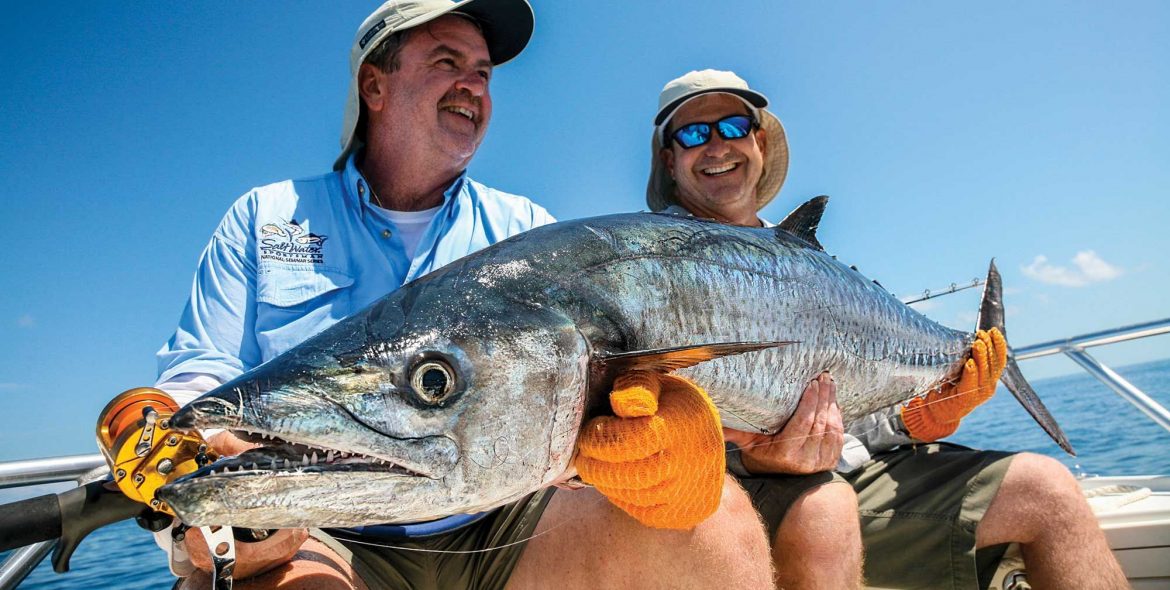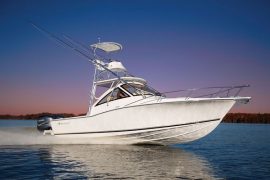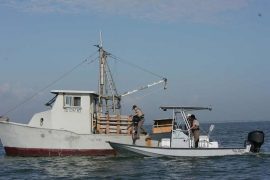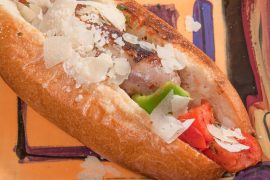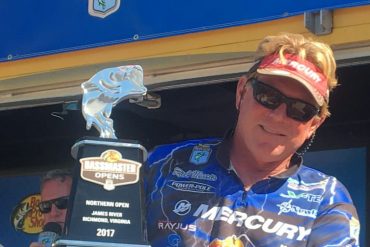
Twenty-pound braid raced from the small Penn 4500 spinner. I held the rod high, loosened the drag and hoped the fish would stop.
Play Video
Play
Loaded: 0%
Progress: 0%
Remaining Time -0:00
This is a modal window.
Foreground — White Black Red Green Blue Yellow Magenta Cyan — Opaque Semi-Opaque
Background — White Black Red Green Blue Yellow Magenta Cyan — Opaque Semi-Transparent Transparent
Window — White Black Red Green Blue Yellow Magenta Cyan — Opaque Semi-Transparent Transparent
Font Size 50% 75% 100% 125% 150% 175% 200% 300% 400%
Text Edge Style None Raised Depressed Uniform Dropshadow
Font Family Default Monospace Serif Proportional Serif Monospace Sans-Serif Proportional Sans-Serif Casual Script Small Caps
Defaults Done
Fortunately, it ceased running after emptying three-quarters of the spool. Now my fear was it would swim beyond the ledge and part the line on the coral. Remarkably, that didn’t materialize either. With the big king reasonably under control, our fear shifted to the sharks. And through it all, I was hoping the 30-pound titanium leader and small hook would hold.
We were anchored off Bimini, and the yellowtails had shut down due to a wolf pack of sharks moving in. However, some cero mackerel appeared, and I began drifting baits back for them. And that’s when I hooked the big king. Over the years, we’ve bested kings as large as 66 pounds aboard my MARC VI, with several in the 50-pound class, but I never saw this one coming, a 55-pounder under seriously challenging conditions.
Miraculously, in lieu of these obstacles, we landed the big king.

Nonconformists
Kings exceeding 25 pounds are impressive predators and extremely challenging on 20-pound-class and lighter tackle. And should you score, they’re quite delicious when smoked and even parlayed into a dip. School kings are fun too, but I’ll take one big smoker over a bunch of snakes.
Unlike school kings, the smokers migrate to the beat of a different drummer. Dr. Bob Shipp, Professor Emeritus of Marine Sciences at the University of South Alabama, reports that the king mackerel migration in the northern Gulf used to parallel the cobia run, with schools of 10- to 20-pound-class kings arriving in March or April.
“That certainly has changed over the last 20 to 30 years,” says Shipp. “It was water temperature which drove the migrations of the larger kings, as it still does for the smaller ones. But now, for the big kings, it’s all about forage. They’re not as migratory in our region anymore. Instead, they hold at the rigs, wrecks, structures and artificial reefs where the forage is. Structures holding bait year-round will also hold big kings year-round.”
Off Alabama, a 1,200-square-mile permitted area holds abundant artificial reefs, cement pyramids and other environmentally compatible materials. And nearly every one of these reefs holds bait and big king mackerel. Find the structures holding masses of bait and there should be some big kings around them, says Shipp.

Florida Keys Chime In
Key West Capt. Mark Schmidt echoes Shipp’s sentiments for Gulf-side kings.
“In the Gulf, big kings gather around structure as small as troughs and rock piles,” says Schmidt. “It’s all about the forage. Yellowtails are a huge part of their diet. Big kings will be on any troughs, wrecks, shoals, rock piles or ledges that hold ’tails on both the Gulf and Atlantic sides.”
Gulf fish show in numbers in…

